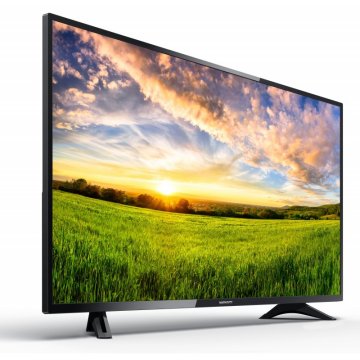Applications of technology have improved the sound and picture quality of television in a relatively short amount of time. HDTV is an abbreviation often heard in advertising, leaving many people wondering: What is HDTV? How does HDTV work? High-definition television refers to a specific digital resolution format that leads to more vivid images on the screen. While HDTV is a specific type of digital television, not all digital television is classified as HDTV.
What is HDTV?
Digital television formats are classified according to the numbers of pixels per inch, or psi. Both standard and enhanced digital television formats are numbered 480 psi. HDTV numbers are either 720 or 1080 psi, a significant upgrade. This enhanced visual quality makes HDTV the current top-tier format for digital television.
How does HDTV work?

There are many HDTV manufacturers. Magnavox is one of the more well-known makers of HDTV products.
Twenty-first century television is no longer dependent on analog signals that required an antenna. Just as with the resolution on computer monitors, the digital signals for HDTV are a series of zeros and ones at their most basic level. Interference that was common with analog does not affect these types of signals.
HDTV incorporates advanced technology known as MPEG-2 in order to make its high level of picture detail possible. When older televisions received analog signals, they were processed through scan lines that were designed to allow certain numbers of pixels to be visible. The average number of pixels from an analog signal was around 200,000. Compare this to the average 2 million pixels from an HDTV signal, and the improvement is obvious.
Dolby Digital Sound
A major feature of HDTV is the use of audio technology to bring the same sound quality previously found only in movie theaters into private homes. In order to ensure this technology has been integrated with HDTV, potential customers should look for the AC-3 format designation. To receive HDTV signals, cable customers need to have a receiver for digital signals that televison stations broadcast.
Switching to HDTV
This process typically involves purchasing both an HDTV receiver and HDTV television set. In order to ensure the correct equipment is obtained the first time, it is helpful to go through the following checklist to determine which equipment types fit individual situations.
Does the local cable provider currently broadcast high-definition signals? If so, an integrated HDTV set will be required. Installation in this case involves fewer steps because it simply involves connecting the set to an existing cable box, antenna, or satellite dish.
Is the existing sound system up-to-date enough to work with the new HDTV service? Factor in the added costs for this equipment as needed.
Will there be the need to hire a professional installer? Some HDTV integrated sets are simple enough to be installed without one, though this not always the case.




